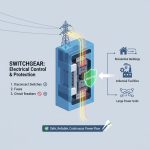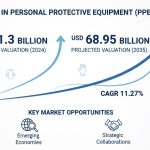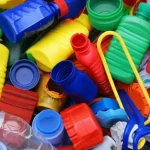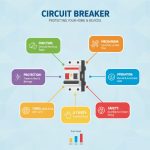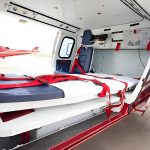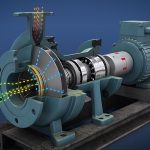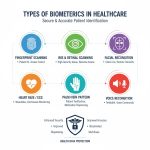Bottled Water Testing Equipments Market: Comprehensive Analysis and Future Outlook
The bottled water testing equipments market stands at a pivotal juncture, characterized by robust growth prospects driven by regulatory compliance requirements, technological innovations, and evolving consumer expectations for water quality transparency. As the global bottled water industry continues its expansion trajectory, the demand for sophisticated, accurate, and efficient testing solutions will intensify, creating substantial opportunities for equipment manufacturers and technology providers. Success in this dynamic market requires understanding diverse regional requirements, addressing cost sensitivity concerns, and continuously innovating to meet emerging testing challenges. Companies that can effectively balance technological advancement with practical operational considerations while maintaining compliance with evolving regulatory standards will be best positioned to capitalize on the significant growth opportunities ahead. The integration of automation, digitalization, and sustainability considerations will likely define the competitive landscape, making adaptability and innovation essential for long-term market success.
Overview of Bottled Water Testing Equipments Market
The bottled water testing equipments market represents a critical segment within the broader water quality analysis industry, focusing specifically on instruments and technologies designed to evaluate the safety, purity, and quality of bottled water products. This specialized market encompasses various testing devices including microbiological analyzers, chemical contaminant detectors, pH meters, conductivity meters, turbidity meters, and advanced spectroscopic equipment. The market’s growth trajectory is primarily driven by stringent regulatory standards imposed by health authorities worldwide, increasing consumer awareness regarding water quality, and the exponential growth of the global bottled water industry. Rising concerns about waterborne diseases, contamination incidents, and the need for compliance with international quality standards such as FDA, EPA, and WHO guidelines further propel market demand. Additionally, technological advancements in testing methodologies and the integration of automation and digitalization in testing processes contribute significantly to market expansion.
Get a Sample Copy:- https://www.vantagemarketresearch.com/bottled-water-testing-equipment-market-1084/request-sample
According to analysts at Vantage Market Research, The global Bottled Water Testing Equipment Market is valued at USD 7.34 Billion in 2024 and is projected to reach a value of USD 13.08 Billion by 2035 at a CAGR (Compound Annual Growth Rate) of 5.40% between 2025 and 2035.
Top 10 Key Players
- Bio-Rad Laboratories
- Agilent Technologies
- Waters Corporation
- Thermo Fisher Scientific
- Perkinelmer
- Shimadzu Corporation
- Sigma-Aldrich Corporation
- Restek
- Accepta
- Lamotte Company
Bottled water testing equipment refers to specialized instruments and devices designed to analyze, measure, and verify the quality, safety, and purity of bottled water products. These sophisticated tools are essential components of quality assurance programs used throughout the bottled water industry to ensure products meet regulatory standards and consumer safety requirements.
Core Functions and Purpose
Bottled water testing equipment serves multiple critical functions in the production and quality control process. These instruments detect and measure various contaminants, including harmful bacteria, viruses, chemical pollutants, heavy metals, and other substances that could pose health risks to consumers. The equipment also verifies that bottled water meets specific quality parameters such as pH levels, mineral content, taste, odor, and visual clarity.
Types of Testing Equipment
The category encompasses a wide range of instruments, each designed for specific testing purposes. Microbiological testing equipment includes incubators, colony counters, and automated identification systems that detect harmful microorganisms like E. coli, Salmonella, and Legionella. Chemical analysis instruments such as spectrophotometers, chromatographs, and mass spectrometers identify and quantify chemical contaminants, including pesticides, pharmaceuticals, and industrial chemicals.
Physical parameter testing devices measure characteristics like turbidity, conductivity, total dissolved solids, and temperature. Advanced equipment may include multi-parameter analyzers that can simultaneously test multiple quality indicators, portable field testing kits for on-site analysis, and automated laboratory systems that can process hundreds of samples with minimal human intervention.
Industry Applications
Bottled water manufacturers use this equipment at various stages of production, from source water evaluation to final product verification before distribution. Regulatory agencies employ testing equipment to conduct compliance inspections and verify that products meet established safety standards. Third-party testing laboratories utilize comprehensive equipment suites to provide independent quality verification services to manufacturers and retailers.
Importance in Quality Assurance
Testing equipment plays a crucial role in maintaining consumer confidence and ensuring public health protection. Regular testing helps identify potential contamination sources, validates treatment processes, and provides documentation necessary for regulatory compliance. This equipment enables manufacturers to detect problems early in the production process, preventing contaminated products from reaching consumers and protecting brand reputation.
The sophistication and reliability of bottled water testing equipment continue to evolve with advancing technology, incorporating features like real-time monitoring, data logging, and connectivity capabilities that enhance testing efficiency and accuracy while supporting comprehensive quality management systems.
Market Dynamics
The bottled water testing equipments market operates within a complex ecosystem influenced by multiple dynamic factors that shape its growth trajectory and competitive landscape. Regulatory compliance serves as the primary market driver, with governments worldwide implementing increasingly stringent quality standards for bottled water products. The FDA’s Current Good Manufacturing Practices and the European Union’s stringent water quality directives mandate comprehensive testing protocols, creating substantial demand for sophisticated testing equipment. Consumer behavior patterns also significantly impact market dynamics, as health-conscious consumers increasingly demand transparency in water quality, forcing manufacturers to invest heavily in comprehensive testing infrastructure. The market experiences substantial influence from technological innovation cycles, with manufacturers continuously developing more accurate, faster, and cost-effective testing solutions. Economic factors play a crucial role, particularly in developing regions where budget constraints may limit adoption of advanced testing equipment, while developed markets show preference for high-end, automated solutions. Supply chain dynamics affect equipment availability and pricing, especially considering the specialized nature of many testing components and the concentration of key suppliers in specific geographic regions.
Market Segmentation
By Technology
- Traditional
- Rapid (65.5%)
By Componant
- Instruments (45.5%)
- Consumables & Reagents
- Reference Materials
By Test Type
- Microbiological
- Physical
- Chemical (46.2%)
- Radiological
Top Trends
Several transformative trends are reshaping the bottled water testing equipments market landscape, reflecting broader technological advancement and evolving industry requirements. Automation and digitalization represent the most significant trend, with manufacturers increasingly adopting smart testing systems that offer real-time monitoring, data analytics, and remote connectivity capabilities. Internet of Things integration enables continuous monitoring and predictive maintenance, reducing operational costs and improving testing accuracy. Portable and handheld testing devices are gaining tremendous popularity, allowing on-site testing and quality verification at various stages of the production and distribution process. Artificial intelligence and machine learning applications are revolutionizing data analysis and interpretation, enabling faster detection of anomalies and more precise quality predictions. Sustainability consciousness is driving demand for energy-efficient testing equipment and eco-friendly testing methodologies, aligning with corporate environmental responsibility initiatives. Multi-parameter testing capabilities are becoming standard, with modern equipment capable of simultaneously analyzing multiple water quality parameters, thereby improving efficiency and reducing testing time. Cloud-based data management systems are facilitating better compliance tracking and quality assurance documentation, essential for regulatory adherence and supply chain transparency.
Top Report Findings
- The global bottled water testing equipments market is projected to reach USD 13.08 billion by 2025, growing at a CAGR of 5.40% from 2025 to 2035.
- Microbiological testing equipment segment dominates the market, accounting for approximately 35% of total revenue share.
- North America holds the largest market share at 38%, followed by Europe at 28% and Asia Pacific at 22%.
- Automated testing systems are experiencing the highest growth rate, with a projected CAGR of 9.1% during the forecast period.
- Small and medium-sized bottled water manufacturers represent the fastest-growing customer segment.
- Chemical contaminant testing equipment is expected to witness significant growth due to increasing concerns about emerging pollutants.
- The market shows strong correlation with bottled water consumption patterns, with premium water segments driving demand for advanced testing.
- Integration of IoT and AI technologies is creating new revenue opportunities for equipment manufacturers.
- Regulatory compliance costs account for 15-20% of total bottled water production expenses.
- Portable testing equipment market is expanding at twice the rate of stationary equipment.
Challenges
The bottled water testing equipments market faces several significant challenges that impact growth potential and market penetration across different regions and customer segments. High initial investment costs pose substantial barriers, particularly for small and medium-sized bottled water manufacturers who struggle to justify expensive testing equipment purchases against their production volumes and profit margins. Technical complexity of advanced testing equipment requires specialized training and expertise, creating ongoing operational challenges and increasing total cost of ownership through training expenses and potential operational errors. Maintenance and calibration requirements demand continuous investment and technical support, which can be particularly challenging in remote locations or developing markets with limited technical infrastructure. Regulatory compliance complexity varies significantly across different countries and regions, requiring equipment manufacturers to develop multiple product variants to meet diverse regulatory standards, increasing development costs and market complexity. Sample handling and preparation procedures often require specific protocols and skilled personnel, limiting the effectiveness of testing equipment in environments with inadequate laboratory infrastructure. Equipment standardization challenges arise from the diversity of testing protocols and quality standards across different markets, complicating international equipment deployment and creating compatibility issues between different testing systems and methodologies.
Opportunities
The bottled water testing equipments market presents numerous lucrative opportunities driven by emerging market dynamics and technological innovations. Developing economies with rapidly expanding bottled water industries offer substantial growth potential, particularly in Asia Pacific and Latin American regions where increasing disposable income and urbanization drive bottled water consumption. Emerging contaminant detection represents a significant opportunity, as concerns about microplastics, pharmaceutical residues, and endocrine-disrupting chemicals create demand for specialized testing capabilities. Integration of blockchain technology for supply chain transparency and quality assurance documentation opens new revenue streams and value propositions for equipment manufacturers. Rental and leasing models present opportunities to address cost barriers faced by smaller manufacturers while creating recurring revenue streams for equipment providers. Customization and modular equipment design allow manufacturers to serve diverse market segments with tailored solutions, expanding market reach and improving customer satisfaction. Strategic partnerships with bottled water manufacturers, regulatory bodies, and technology providers create opportunities for collaborative product development and market expansion. The growing premium and functional water segments demand specialized testing capabilities, creating niche markets for advanced testing equipment with higher profit margins and reduced price sensitivity.
Key Questions Answered in Bottled Water Testing Equipments Market Report
- What are the primary factors driving growth in the bottled water testing equipments market globally?
- How do regulatory requirements vary across different regions and impact equipment demand?
- Which testing parameters are considered most critical for bottled water quality assurance?
- What technological innovations are transforming the bottled water testing landscape?
- How do small and large bottled water manufacturers differ in their testing equipment requirements?
- What are the cost implications of implementing comprehensive bottled water testing programs?
- Which regional markets offer the highest growth potential for testing equipment manufacturers?
- How do consumer preferences and awareness levels influence bottled water testing requirements?
- What are the key performance indicators used to evaluate bottled water testing equipment effectiveness?
- How do emerging contaminants and new health concerns impact testing equipment development?
- What role does automation play in modern bottled water testing facilities?
- How do equipment manufacturers address the diverse needs of different water source types?
- What are the maintenance and operational considerations for bottled water testing equipment?
- How do international quality standards influence equipment design and functionality?
- What are the emerging business models in the bottled water testing equipment industry?
Regional Analysis
The bottled water testing equipments market exhibits distinct regional characteristics influenced by regulatory frameworks, economic development levels, and consumer behavior patterns across different geographic areas. North America maintains market leadership, driven by stringent FDA regulations, high consumer awareness, and substantial bottled water consumption volumes, with the United States accounting for the majority of regional demand through established quality assurance programs and advanced testing infrastructure. Europe represents the second-largest market, characterized by comprehensive EU water quality directives and strong environmental consciousness, with countries like Germany, France, and Italy leading adoption of advanced testing technologies, particularly in premium water segments and sustainable packaging initiatives. Asia Pacific demonstrates the highest growth potential, fueled by rapid urbanization, increasing disposable income, and expanding bottled water industries in countries like China, India, and Southeast Asian nations, where growing health awareness and infrastructure development create substantial opportunities for testing equipment manufacturers. Latin America shows promising growth prospects, particularly in Brazil, Mexico, and Argentina, where improving economic conditions and rising quality standards drive demand for reliable testing solutions, though cost sensitivity remains a significant consideration for market penetration strategies. The Middle East and Africa region presents mixed opportunities, with Gulf countries showing strong demand for premium testing equipment due to water scarcity concerns and quality requirements, while African markets face challenges related to infrastructure limitations and economic constraints, though growing urbanization and increasing bottled water consumption create long-term growth potential.
![[Market Research Reports] – Research Google News Blog | VMR.Biz](https://www.vmr.biz/wp-content/uploads/2022/12/logo-removebg-preview.png)
